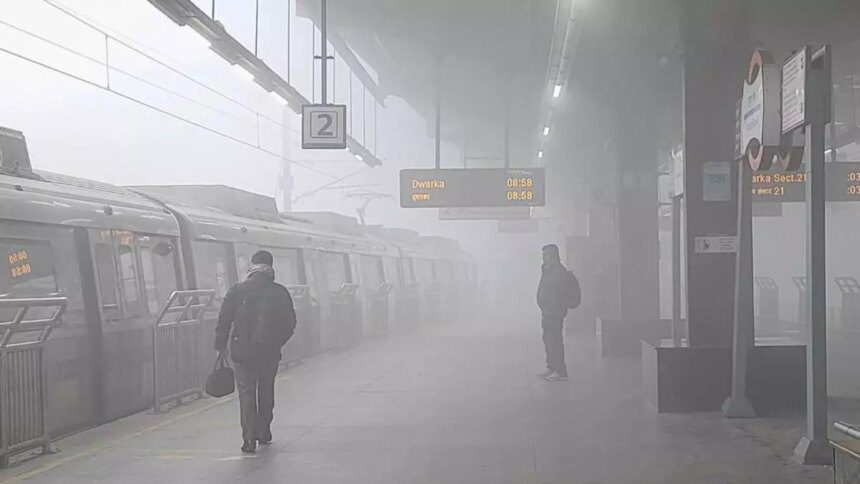A thick layer of fog blanketed Delhi on Saturday morning, causing visibility issues and disrupting traffic flow. Other regions in North India also experienced similar dense fog conditions.
As a consequence of the fog, both train and flight operations faced significant delays at Indira Gandhi International (IGI) Airport and New Delhi Railway Station. Flights were postponed, and numerous trains were affected due to the poor visibility.
According to the India Meteorological Department, the temperature in Delhi dropped to 11.2 degrees Celsius at around 5:30 AM.
On a positive note, air quality in the capital has seen some improvement. The Central Pollution Control Board reported that Delhi’s Air Quality Index (AQI) stood at 248 at 7 AM. For context, an AQI ranging from 0 to 50 is deemed ‘good,’ 51 to 100 is ‘satisfactory,’ 101 to 200 is ‘moderate,’ 201 to 300 is considered ‘poor,’ 301 to 400 is ‘very poor,’ and any level from 401 to 500 is classified as ‘severe.’
The Commission for Air Quality Management (CAQM) has opted to lift the restrictions under Stage III of the Graded Response Action Plan (GRAP) due to a noticeable improvement in air quality levels in Delhi. This decision, announced on January 17, came after a review by the GRAP Sub-Committee, which noted a consistent drop in the AQI from “Severe” to “Very Poor.” The AQI reading of 302 on January 16 fell below the critical threshold of 350, prompting this change. The CAQM highlighted that favorable weather conditions, especially strong winds, have played a significant role in this sustained improvement. However, measures under Stage I and Stage II of GRAP will continue to ensure ongoing air quality monitoring and to prevent any further decline.
In response to the dropping temperatures, homeless individuals have been seeking refuge in night shelters across Delhi. The Delhi Urban Shelter Improvement Board (DUSIB) has established 235 pagoda tents to accommodate those in need, with shelters set up in various locations.
Meanwhile, Uttar Pradesh’s Prayagraj is also shrouded in fog as the ongoing Maha Kumbh festival attracts millions of devotees. In just the first four days of this 45-day event, over 70 million pilgrims have taken holy dips at the Triveni Sangam—the sacred meeting point of the Ganga, Yamuna, and the mythical Saraswati rivers.
In Ayodhya, residents are seen gathered around bonfires to keep warm as temperatures in the city continue to drop.










